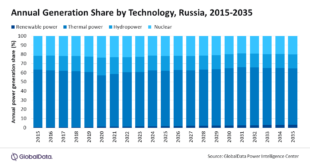More than four-fifths (81%) of UK electrical vehicle drivers have experienced faulty public EV chargers. For an unlucky 11%, half the public chargers they tried to access were faulty. From connectivity issues, damaged plugs, sluggish screens, to payment systems failures, defective chargers are interrupting journeys and contributing to EV range anxiety.
This is according to a poll, designed to mark World Electric Vehicle Day (9th September), which uncovers issues EV owners continue to face – from faulty chargers and the use of DC charging, to the need for joining multiple charging networks.
On the flip side, smart charging consultancy Versinetic also explored timelines and reasons for non-EV drivers delaying conversion, as well as thoughts on solar and the reliability of diesel and petrol provision.
Faulty chargers
There are a number of potential reasons why so many drivers are experiencing broken chargers, including lack of standards. Manufacturers are not required to build chargers to a universal standard, creating a mish-mash of alternatives, which may require different fixes.
Coupled with a lack of EV charging technicians, faulty chargers, especially in rural areas, are being encountered by more drivers.
In November 2021, Channel 4’s investigative programme, Dispatches, found that over 5.2% of the 26,000 public EV chargers they investigated were broken.
Non-EV drivers reported that access to fuel was a lot more reliable. 62% stated that less than 10% of petrol pumps they accessed were faulty, while almost a quarter (24%) never encountered issues with refuelling.
Fast DC charging
Respondents were asked how often they fast charge their electric cars from a DC charger.
37% said weekly, 33% fortnightly, while 15% benefitted rarely/occasionally.
13% cited monthly and 2% never used one.
DC fast chargers can take between 15-45 minutes to charge most passenger EVs up to 80%, while their AC counterparts are typically fitted at home or work to provide charge over a longer period of time.
In reality, the average range of an EV works well for trips into town or short commutes, so unless a driver is doing a longer journey, then AC charging will be sufficient.
Multiple charging networks to cover all bases
It’s not just enough to find a charging point; in most cases you need to be signed up to the charging network to get the best prices. It is no surprise that the majority of EV drivers are members of multiple networks. 57% of people in Versinetic’s poll reported that they were members of two or more charging network.
The likelihood of finding working chargers also seems to be a factor in how many networks drivers join. Drivers who found none or only 10% of chargers faulty, were most likely to be a member of only one or two charging networks.
Without an adequate number of chargers from any one provider, signing up for multiple networks is to be expected. Data from Zap Map shows that there are over 33,000 charging points across the UK, still a long way short of the government’s target for 300,000 charging stations by 2030.
Solar panel integration feature on your home charger
50% of EV drivers who charge regularly (i.e., weekly or fortnightly), want solar panel integration on a home charger. However, using solar to charge a car isn’t without complications. Solar power is, naturally, generated during the day. Therefore, if you are commuting and out at work all day, or want to charge overnight, you may not reap the full benefit from solar charging unless an additional battery is installed in the home to store the energy generated.
52% of non-EV drivers would want a solar panel integration feature on a home charger, while 38% would consider it. A domestic solar PV System combined with a solar-compatible EV charger enables users to charge an electric vehicle completely from sunlight.
The Versinetic team also polled non-EV drivers to understand:
The reasons for not making the switch to EVs: The cost of purchasing an EV still remains the main barrier to adoption, with 62% of non-EV drivers citing it as the top reason, 10% cited the lack of chargers and a further 10% found that home charging was not practical, and 7% were concerned about battery range.
Timescales for switching: On asking when they anticipated making the switch to an EV, the largest group at 41% are planning to move to EV in over five years’ time, just over a third of respondents in the next 3-4 years, 14% in 1-2 years, 7% in the next year and 3% never.
 Engineer News Network The ultimate online news and information resource for today’s engineer
Engineer News Network The ultimate online news and information resource for today’s engineer



